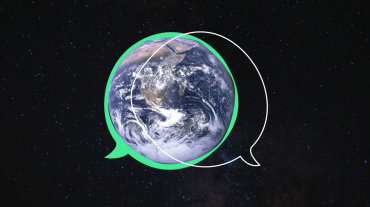How to shop smarter for the climate
Should we take extra care of what we put in our trolley or simply shop less? The answer is both. Here are seven tips to green up your shopping list today.
These days it often feels like we're defined by what we buy instead of who we are. We're all individuals, but also "consumers". As countries have gotten richer and goods have gotten cheaper, people are shopping (and wasting) so much more. Today, the average person buys 60% more clothing than they did 15 years ago and produces over 7 kg of electronic waste a year, a 21% increase from just five years ago.
This is bad news for our planet. Each step in the product supply chain — from raw materials extraction, processing, manufacturing, logistics, retail and storage, all the way to personal use and disposal — generates greenhouse gas emissions that contribute to global warming. Not to mention the associated depletion of natural resources and pollution of our environment, both causing a rapid loss in biodiversity.

Seven tips for climate-friendly shopping
📦
Declutter your home. Okay, this may not sound like a big deal, but trust us — it can be life-changing. If you dig deep into your closet or utility room, you'll probably find a bunch of stuff you've never used, or even forgotten about. Instead of buying new things, make use of what you already have, or pass them onto someone else. Getting rid of dusty items helps you understand what you truly need, so you'll think twice before the next impulse purchase. Sound like a challenge you're ready for? Check out this guide to get started.
🧘🏻
Shift your mindset. Buying cheap goods is an easy trap to fall into. You know the old saying: If you buy cheap, you buy twice. Not only is fast fashion, non-repairable electronics, or throwaway items often more expensive than durable alternative — but with their short lifespans, it’s a waste of time getting them replaced. Crucially, the real cost of unsustainable consumption is paid by the planet: Every unnecessary item bought creates more trash in our landfills and more greenhouse gases in our atmosphere.
You don’t need to become a hardcore minimalist to make a difference. Mindful consumption can begin by asking: Do I really need this? How long will I use this for? What alternative will serve me longer? A great guard against impulse purchases is the two-week rule: If you’re excited about a new item, wait two weeks before buying it. In most cases, the craving for a frivolous item will have passed by then.
👭
Involve your friends. Changing old habits is never easy, so why not make it fun? Set a group challenge to stop buying non-essential items for one month and keep track of your collective progress in a chat group. Supporting and motivating each other might help you achieve your goals.
👀
Check what you’re buying. Inspect the item and ensure its quality. Is it made of robust materials? Are the parts easily replaceable or repairable? Are they glued together or can you take them apart? If the design and materials are good, the item will probably live a long and happy life — and be much easier to repair if necessary.
⌛
Make it last. Taking good care of your items will ensure they last as long as possible. For example, wash clothes only when necessary and at low temperatures. Or avoid leaving your electronics in very cold or hot environments — or polish your wooden furniture regularly to preserve that natural shine. And crucially: Repair what’s broken. Many defects can be fixed with just a few stitches, a bit of glue, a screwdriver, or by visiting a good ol’ repair shop. This simple principle, combined with the one above, can literally save millions of tons of CO2 — by extending the lifespan of many products that would otherwise be thrown away.
👜
Buy second-hand. Vintage is not only cool, but also more planet-friendly — giving used items a second life. Shopping vintage means you reduce the demand for new goods, and thus your carbon footprint. Alternatively: Pass on your own used goods to new owners in the circular economy. That could mean selling your old furniture at a flea market, or by hosting a clothing swap for your friends.
♻️
Sharing is caring. You’ve probably heard this one: The average drill is used for just 13 minutes. So why do we still think we should each own one? It's illogical. Sharing rarely-used items between friends or neighbours isn’t just good for the environment, it saves you space and money — and is a great way of maintaining relationships.
The big picture
Unsustainable consumption is a bigger contributor to the climate crisis than many realize. Globally, 99% of the stuff we buy is trashed within six months. Insane, yes, but also a huge opportunity to make a meaningful change in our daily lives. Switching to sustainable shopping isn't as hard as you think: Buy less, pick higher-quality goods, repair what you can still use, and pass on what you no longer need. The climate will thank you — and your wallet too.



